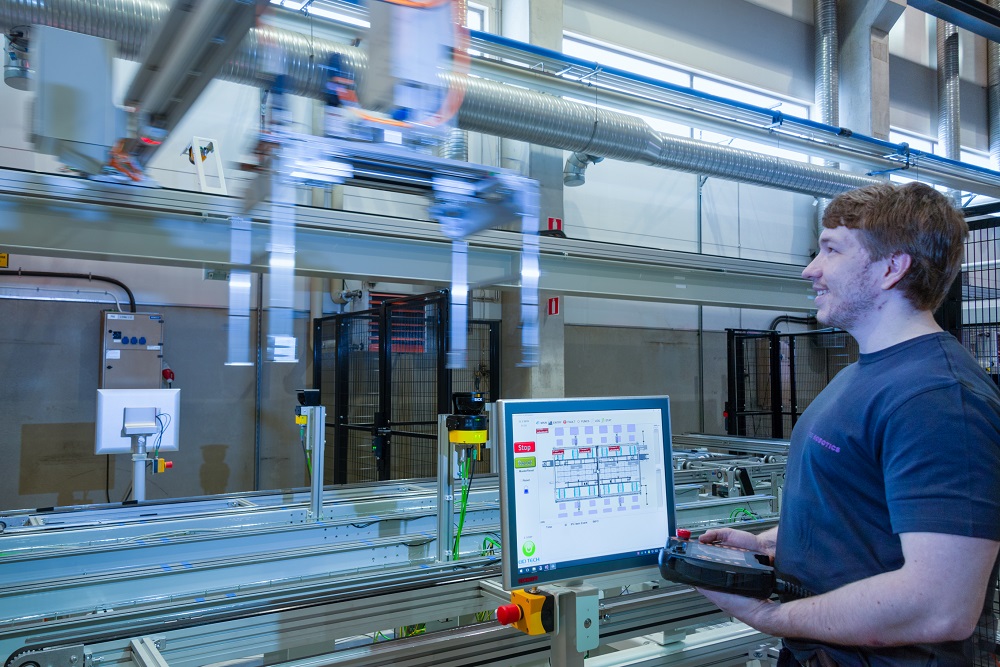Blog: Who is responsible when a robot injures a nearby worker? Manager, recognize the safety and responsibility issues
Collaborative robots collaborate closely with nearby people in manufacturing facilities. Whenever a human being is in the vicinity of a robot, the risk of contact exists. It is often said that collaborative robots are so small and slow that they do not pose a risk to the people working in the same environment. In such cases, it is vital to understand that these robots have a payload of a few hundred grams. Cobotta, marketed by DENSO Robotics, is an excellent example.
I think that a safe collaborative robot with a payload of a few kilograms is like Santa Claus. It is wonderful to believe in such a thing, but the disappointment when you realize that it is not possible for such a thing to exist. Such robots can cause serious injuries to any employees working with them. The question of responsibility is also often overlooked. Who is responsible when a robot causes a personal injury to a nearby employee?
The movements of a robot are predictable, human movements are not
I think it is dangerous to presume that collaborative robots are completely safe for humans. The pre-programmed movements of a robot can be easily predicted. Conversely, humans are very unpredictable in their movements. The employee’s safety is compromised if the gripper of a collaborative robot has sharp edges or the collaborative robot is programmed to handle heavy items or items with sharp edges. The collaboration between a collaborative robot and a human being has an inherent risk of contact.
A risk analysis that specifies the types of possible hazardous situations caused by a collaborative robot in a detailed manner must be conducted before a collaborative robot is taken into use. It is not enough that the collaborative robot itself is a safe colleague: light, round-edged, and with limited strength, energy and speed. Even if the robot itself has been proven to be safe by the manufacturer, the gripper of the robot, the shape of the objects handled by the robot, and the operating environment can cause unexpected risks. This is why it is imperative to test the collaborative robot’s movements and the possibility of contact in an authentic setting.
Risk analysis is an ongoing process
Risk analyses must cover all possible scenarios: in which circumstances can robots and humans collide, what can go wrong and how are any possible problems solved. In most cases, the greatest risk in the operation of a collaborative robot is related to unexpected circumstances. The results of risk analysis may indicate that the robot’s strength or speed must be weakened and slowed down in order to reduce the risk of accidents.
Carrying out a risk analysis requires strong measurement and qualification expertise. The measurement of impact force and surface pressures alone includes a variety of variables that are difficult to model. The integrator or manufacturer of the collaborative robot is typically responsible for carrying out a risk analysis and the certification/validation of the robotic application. A new risk analysis must be performed even if minor changes in the manufacturing process are made. Risk management and assessment require constant efforts.
Who is responsible?
It is important to address the question of responsibility in the procurement of a collaborative robot. The procurement process typically includes an integrator who is in charge of the robot’s integration into the manufacturing process, the functionality of the application, risk analyses, and safety. However, it is good to keep in mind that, in almost all accidents, the company itself is held responsible for ensuring safety, not the supplier or integrator of the collaborative robot.
Acquiring robots or collaborative robots does not provide a ready-made solution. Instead, they must always be applied appropriately in their unique manufacturing processes. Because of this, safety must always be ensured professionally and carefully on a case-by-case basis. Major advances in safety and sensor technology are being made at a tremendous speed, allowing for new ways of collaboration between humans and robots.
Conventional industrial automation and collaborative robots
We at EID Robotics are specialized in designing and delivering fully automated industry applications and microfactories. The speed and accuracy of the DENSO robots used by us are excellent and guarantee the high quality and efficiency of manufacturing operations. The automated manufacturing process is efficient without the need for human intervention in repetitious and monotonous phases.
Our deliveries include a careful risk analysis and the related documents and CE markings. We are responsible for ensuring the safety of the automation provided by us when it is used properly, and we will always ensure that the automated solution is safe for the employees involved with it.
It is certain that, in the future, collaborative robots will become increasingly popular as giant leaps forward are made in the safety and sensor technology industry. Major improvements in the force control, impact detection, predictability, and stopping performance of collaborative robots are likely. Even in the light of these advances, it is important to ensure the safety of employees in all circumstances and environments. Uniform standards, an unambiguous division of responsibilities, careful planning, and continuous risk analyses are required in order to make the collaboration between humans and robots safe, flexible, and efficient.
More information:
Paavo Käkelä
Sales VP
+358 50 361 3945
paavo.kakela@eidrobotics.com
EID ROBOTICS OY, founded in 2009, is a developer of automation solutions and a revolutionizer of the production industry. Their ANT Plant manufacturing concept is an industry innovation. The company is located in Kuopio, Finland. The company has long-time experience with client-focused industrial automation, especially in the fields of electronics, electrical work and lighting.

